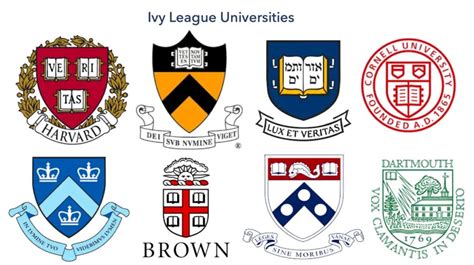Introduction:

The Ivy League, a prestigious consortium of eight private research universities in the Northeastern United States, has long been regarded as the epitome of academic excellence. However, the question of whether Stanford University, an esteemed institution located in California, belongs to this esteemed group has been a subject of debate for decades.
Understanding the Ivy League Designation:
The Ivy League is not an official classification or organization. It emerged as a term used by sportswriters to refer to eight universities that competed in the same athletic conference: Harvard, Yale, Princeton, Columbia, Cornell, Brown, Dartmouth, and the University of Pennsylvania. Over time, the term became synonymous with academic prestige and selectivity.
Stanford University’s History and Distinction:
Stanford University was founded in 1885 by Leland and Jane Stanford as a coeducational, non-sectarian institution. From its inception, Stanford has been recognized for its exceptional academic programs, particularly in science, technology, engineering, and medicine. It consistently ranks among the top universities in the world.
Geographical Considerations:
One of the primary reasons for Stanford’s exclusion from the Ivy League is its location outside of the Northeastern United States. The eight Ivy League institutions are all located in the Northeast, historically centered around the Boston and New York metropolitan areas.
Admission Selectivity and Prestige:
Stanford University is highly selective, with an acceptance rate of approximately 4%. This places Stanford among the most competitive and prestigious universities in the United States. In terms of academic reputation and research output, Stanford is comparable to the Ivy League universities.
Comparisons and Contrasts with Ivy League Institutions:
While Stanford shares similarities with the Ivy League universities in terms of academic rigor, selectivity, and prestige, there are also some key differences:
- Geographic Location: Stanford is located on the West Coast, while the Ivy League universities are concentrated in the Northeast.
- Founding History: Stanford was founded in 1885, while the Ivy League universities were established centuries earlier.
- Group Affiliation: Stanford is not formally part of the Ivy League athletic conference or any other official organization that includes the Ivy League institutions.
Table 1: Comparison of Ivy League Universities and Stanford University
| Characteristic | Ivy League Universities | Stanford University |
|---|---|---|
| Location | Northeastern United States | California |
| Founding | 17th and 18th centuries | 1885 |
| Academic Reputation | Highly prestigious | Highly prestigious |
| Research Output | World-renowned | World-renowned |
| Admission Selectivity | Very high (acceptance rate around 5%) | Very high (acceptance rate around 4%) |
Stanford University’s International Standing:
Despite not being officially classified as an Ivy League institution, Stanford University has gained international recognition for its academic excellence. It consistently ranks among the top universities in global university rankings, including those published by Times Higher Education and QS World University Rankings.
Table 2: Stanford University’s Global Rankings
| Ranking | Year | Rank |
|---|---|---|
| Times Higher Education World University Rankings | 2023 | 3 |
| QS World University Rankings | 2023 | 7 |
Benefits of Attending Stanford University vs. Ivy League Institutions:
While Stanford University may not bear the Ivy League label, it offers several unique benefits:
- West Coast Location: Stanford’s location in Silicon Valley provides students with access to cutting-edge technological advancements and internship opportunities.
- Entrepreneurial Spirit: Stanford is known for fostering an entrepreneurial ecosystem, encouraging students to innovate and launch their own ventures.
- Collaboration and Interdisciplinarity: Stanford promotes interdisciplinary collaboration, with research centers and programs that span multiple academic disciplines.
Table 3: Benefits of Attending Stanford University
| Benefit | Description |
|---|---|
| West Coast Location | Access to technological hubs and internships |
| Entrepreneurial Spirit | Encouragement for innovation and entrepreneurship |
| Collaboration and Interdisciplinarity | Opportunities for cross-disciplinary research and learning |
Pros and Cons of Attending Stanford University vs. Ivy League Institutions:
Pros of Stanford University:
- Exceptional academic programs, particularly in STEM fields
- Prestigious reputation and globally recognized excellence
- West Coast location with access to technological advancements
- Entrepreneurial and innovative environment
Cons of Stanford University:
- Not officially part of the Ivy League
- Geographical distance from major financial and cultural centers
- Higher cost of living compared to some Ivy League schools
Table 4: Pros and Cons of Attending Stanford University vs. Ivy League Institutions
| Factor | Stanford University | Ivy League Institutions |
|---|---|---|
| Academic Reputation | Highly prestigious | Highly prestigious |
| Research Output | World-renowned | World-renowned |
| Location | West Coast | Northeastern United States |
| Cost of Living | Higher | Varies depending on location |
| Entrepreneurial Spirit | Strong | Varies depending on institution |
Conclusion:
While Stanford University may not officially be considered an Ivy League institution due to historical and geographical factors, it stands as a world-class research university that offers exceptional academic programs, a prestigious reputation, and unique opportunities for students. Whether Stanford is considered an Ivy League university or not, it remains a top choice for students seeking a rigorous and transformative educational experience.
